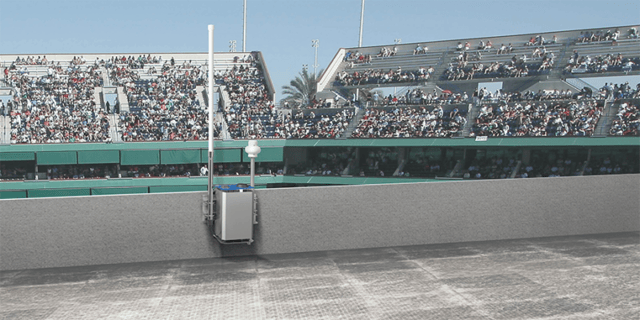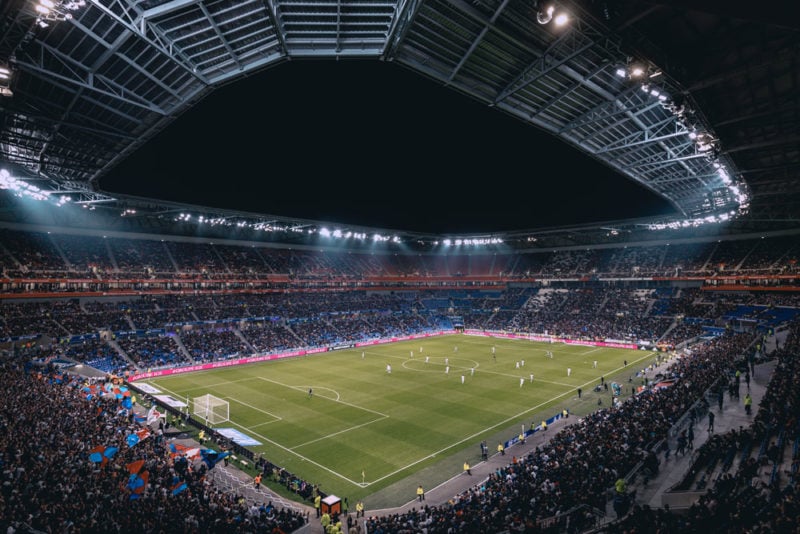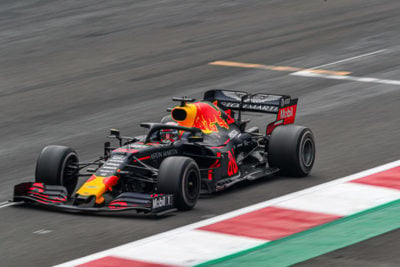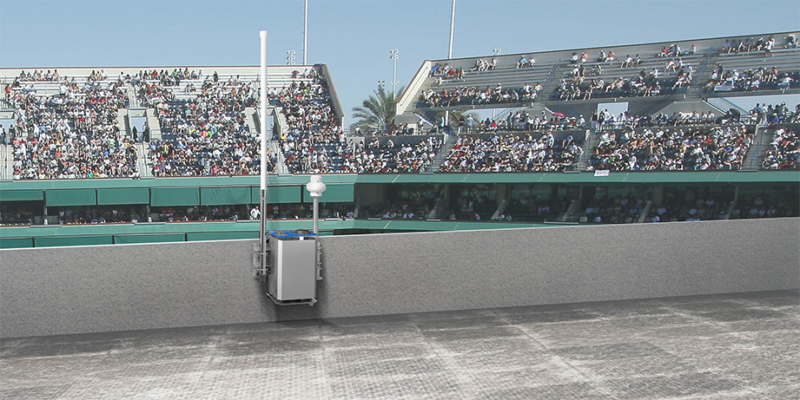From the World Cup to F1: Why Regulators Choose the RFeye Node for Major Events

We See Why Spectrum Monitoring is a Key Component in Ensuring the Success of Major Global Sporting Events.
Securing the RF spectrum at major events is a crucial part of the national spectrum regulator’s role. Major sporting events such as the Olympics and F1 world Championship can mean big money for governing bodies and hosting countries. The 2022 FIFA World Cup is estimated to have generated over $3 billion in TV rights revenue as well as delivering a significant boost to the host nation’s economy.
All this revenue is surprisingly dependent on the ability of regulators to manage the spectrum. Broadcasters will be reluctant to pay the price if spectrum interference leads to interrupted coverage. Meanwhile, the overall safety and experience for match attendees will be compromised if the spectrum cannot be secured for essential emergency communications. Ticket sales and tourism are going to be significantly impacted if fans cannot trust the organizers to deal with incidents ranging from hooliganism to terror threats.
So how do regulators ensure their events remain secure against the invisible beast of RF interference? A network of intelligent RF sensors to monitor the spectrum in real-time is the secret to safety and security. Our RFeye Nodes have been used by regulators at sporting events across the globe including UEFA Euro 2016, 24 hours of Le Mans, Hungarian F1 GP, and FIFA World Cup 2014, to name a few. But how do regulators use the RFeye Nodes before, during, and after these large events?

Pre-event planning and baselining
A key requirement for regulators when they start their search for spectrum monitoring systems is the ability to easily scale up and down. Event requirements can be for monitoring in a single stadium, a large outdoor motor racing track or even many stadiums across multiple cities. RFeye Nodes are highly scalable. Event deployments to date range from a network of four installed in a single stadium, to a network of over 150 across multiple cities.
Some organizers may not be sure of how many Nodes they need, especially if stadiums are still being built when decisions on spectrum management are being made. RFeye Site Software includes a package of simulation and modelling tools which can be used to verify planned network configurations and to test monitoring and geolocation coverage. This includes combining real-world elevation maps with modeled buildings to simulate propagation effects.
RFeye Nodes cover frequencies up to 40 GHz, but our Node 40-8 or 100-8 covering 9 kHz to 8 GHz will often be ideal for all the broadcasting and PMSE (program-making and special events) frequencies of interest at a typical event.
Once the RFeye Nodes are in place, and way before the event starts, a baseline of the spectrum is created. What signals are already being broadcast in the event area, what might cause interference, and what does normal look like? This baseline is then used to set up thresholds and alerts. Using the Automated Spectrum Management software, RFeye Mission, frequency allocations, times, places, and broadcasters can be loaded in, and an automated monitoring schedule created.

RFeye Nodes are lightweight, low-power receivers for real-time monitoring of the RF spectrum as well as geolocation. Nodes are networkable for remote deployment over wide outdoor areas or inside buildings.
Nodes are rugged with IP67 rating and have an extended temperature range, allowing them to be deployed outdoors and exposed to the elements without compromised operation. The operator simply connects to the Node network remotely to carry out any spectrum monitoring and geolocation tasks in real-time. The operator can then be located at the event itself, or they can monitor and control things from many miles away in another city or even country!
During the Event
Once the event starts, the real-time monitoring of the spectrum allows an instant response to any spectrum interference issues which may disrupt broadcasts or essential communications. Alarms can be triggered and TDOA or POA geolocation used to locate the source of signal interference, with the resulting location automatically sent to the relevant person. The combination of TDOA and POA geolocation techniques ensures optimum geolocation performance for different environments. POA is more suited to a single indoor stadium, while TDOA is likely to be more effective across wide areas such as racetracks.
Real-time response also means that many interference issues can be resolved before they cause disruption. Often, many potential cases of interference can be resolved before an event starts. Being able to take these proactive measures minimizes risk to the event as well as stress for event organizers.

RFeye Node deployed in an outdoor kit
After the Event
One of the most significant benefits of the RFeye Node is what happens to them after the event is over. Nodes are highly re-deployable, allowing them to be used for future spectrum monitoring needs at events or for entirely different purposes.
The benefit of deploying Nodes at just a single event is huge. Being able to multiply that benefit tens or hundreds of times over across many events makes a network of RFeye Nodes extremely cost-effective. Redeployment strategies have varied between our different regulatory customers. Some have chosen to use the same Nodes at different events over the year, deploying capacity at stadiums and racetracks as required. Other customers who needed a large volume for a one-time event have been able to redeploy Nodes as part of a national spectrum monitoring strategy.
If you are planning a large event that relies heavily on the RF Spectrum, talk to us first and we can guide you through the planning, deployment and execution that will ensure your event is free of spectrum interference.
Get in touch for a no-obligation planning simulation session.
